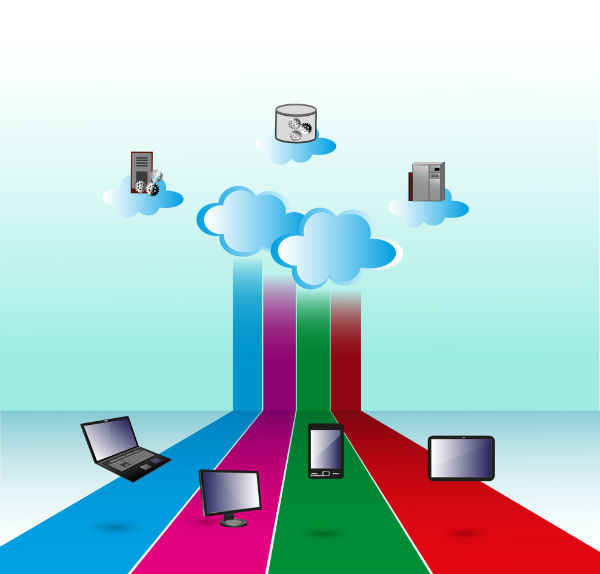SaaS Providers And The Cloud

Software as a service is gaining ground due to several reasons. The most important is the ‘pay as you use’ model. The variety of SaaS providers is mind boggling. I recently saw a SaaS operator provide conversion of audio files into forty different formats. Imagine how many software packages you will have to buy if you want such an extensive repertoire of audio formats. Another SaaS provider gives a complete sound studio online with loops, aural effects and virtual instruments like drums, violin, guitar and others. They also provide online storage space. This is a fascinating service, if you look at the expense and time involved in actually hiring a studio to compose your music. These are only a couple of examples which show the power and range of SaaS. The other aspect of SaaS is the flexibility which a cloud provides in extending these facilities. Why must SaaS providers go for IaaS as their ideal infrastructure?
Scaling provided by cloud
There is a misconception that SaaS is part of cloud nomenclature. SaaS need not always be based in a cloud. SaaS services can as well be provided from traditional hardware and infrastructure. But certainly SaaS model is made for hosting in a cloud. Rather than spend money on idle infrastructure, it’s advisable for SaaS providers to embrace the cloud. These operators must be able to adjust or regulate their infrastructure with increase or decrease in traffic to maximize their profit. Enterprise software is moving to the SaaS model and these providers can optimize their expenses by moving to the cloud. For SaaS startups, cloud is a boon. They can launch their services with least initial expenditure and scale up as their services pickup. Typically, SaaS providers have to wait for a year or more to reach maturity and gather momentum. They often experience a sudden surge in traffic which cannot be estimated in advance. The cloud infrastructure can quickly scale up to meet such a surge in traffic. In the interim, they need not pay for idle infrastructure.
Delivery considerations
In my opinion delivery is critical for any SaaS provider. By this I mean that the services must be reliable and the software delivery must be efficient and effective. Every transaction in a SaaS model is unique and must be completed optimally. For this the infrastructure, platform and the software must work efficiently. There can be no compromise here. The cloud provides a robust environment which meets the exacting demands of SaaS.
A powerful environment is imperative in running a business smoothly. GMO Cloud America’s free Load Balancer functionality is guaranteed to help you build that reliable platform while saving on costs.
Flexibility in server configuration
There are innumerable kinds of SaaS offerings. Some are memory intensive while others require high computational speed and complexity. In case of a cloud we talk of server instances which means flexibility in choosing our configuration depending on requirement. It is this flexibility which is the most attractive feature of cloud. Selecting the right server instances can be achieved with ease when we are based in a cloud. In a traditional data center environment this would be impossible.
Conclusion
SaaS providers must embrace the cloud, especially startups. The two have a symbiotic relationship and provide for better efficiency.
Be Part of Our Cloud Conversation
Our articles are written to provide you with tools and information to meet your IT and cloud solution needs. Join us on Facebook and Twitter.
About the Guest Author:
 Sankarambadi Srinivasan, ‘Srini’, is a maverick writer, technopreneur, geek and online marketing enthusiast rolled into one. He began his career as a Naval weapon specialist. Later, he sold his maiden venture and became head of an offshore Database administration company in Mumbai. He moved on as Chief Technology Officer of one of the largest online entities, where he led consolidation of 300 online servers and introduced several Web 2.0 initiatives. He holds a Master’s degree in Electronics and Telecommunication.
Sankarambadi Srinivasan, ‘Srini’, is a maverick writer, technopreneur, geek and online marketing enthusiast rolled into one. He began his career as a Naval weapon specialist. Later, he sold his maiden venture and became head of an offshore Database administration company in Mumbai. He moved on as Chief Technology Officer of one of the largest online entities, where he led consolidation of 300 online servers and introduced several Web 2.0 initiatives. He holds a Master’s degree in Electronics and Telecommunication.


